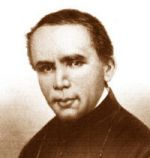Make your gift today!
Help keep Catholics around the world educated and informed.
Already donated? Log in to stop seeing these donation pop-ups.
The Shrine That Has Never Been Destroyed
by Zsolt Aradi
Altotting, called "the heart of Bavaria," is one of the oldest and most popular of those peasant shrines in which Central and Eastern Europe abound. Had records been kept of the number of pilgrims who came to it during the early ages it might even be proved that it has been one of the most frequented shrines in the whole world. For the origin of Altotting goes back to the eighth century, and for over twelve hundred years people of many races and nations have come to it in a steady, unceasing flow.
Other holy places have suffered destruction and temporary oblivion, but at the shrine of Altotting little has changed save the dress of the generations who come and go. Around the town the once thick German forests are thinner but they are there; the villages are more numerous, but they remain the humble, unimposing dwellings of the laborious peasants. Altotting and its devotion to the Madonna are the expression of the organic Christian life and living faith of the European peasantry, that massive force which maintained the unity of Europe despite feudal and national wars.
The place was an important Roman crossroad between the Alps and the plains as far back as 15 b.c. a Roman station called Turum was founded there and a Roman temple was built. When St. Rupert allegedly baptized Otto the Bavarian around 680, the temple became a Christian chapel and this is the same shrine we visit today. In spite of its unusual octagonal form, constructed out of volcanic rock, the building itself does not particularly strike the eye. But it is all the more impressive in its simplicity when one remembers its great age and the many historical vicissitudes it has escaped. Altotting was spared the wars, pestilence and other adversities that afflicted the surrounding regions over the centuries. Although it was sacked by the still unchristianized Hungarians in the ninth century, the chapel and the shrine it contained were left intact. Epidemics that decimated regions of Europe following the destruction of war could have not affected this pilgrim place, for we know that even during these pestilences tens of thousands came here and lived for days and weeks in cramped quarters, mingling in services at the shrine. Not even the Thirty Years' War touched this little town, nor the Napoleonic, the First or Second World Wars.
It was as if Our Lady wanted to preserve one place for the humble people of Europe harassed by armies. Once the pilgrim's eyes fall upon the Black Madonna of Altotting smiling at the Child she holds in her arms, he feels that the peace and simplicity of the shrine is due to her. The face of the statue was not originally black but has been darkened by the ages and the millions of candles burned around it. When one's eyes become used to the half-light in the chapel, one sees the image's original medieval coloring and that parts of the walls are covered with solid silver, and the altar is of silver, too. Altotting, oddly enough, is one of the richest shrines in the world in endowments and in treasure--but these riches, donated by rulers, princes and humble people as well, are hidden in a special treasury not often seen by the visitor.
Though many miracles have taken place in Altotting and the chapel is filled with emblems of gratitude for graces, healings, and help received, the greatest miracle perhaps is the continuous existence of the shrine itself. There are few places where one feels so intensely the living faith of the people, a faith as much a part of the landscape as the forests or the flowers.
It is completely in keeping that the town of Altotting has given to Germany one of her great modern saints, the lay-brother Conrad of Pfarzham who served for thirty years as the smiling, jovial porter of the Capuchin convent. Brother Conrad was canonized in 1925, a few years after his death, proving that a simple and innocent man whose heavy gestures and slow speech did not differ from those of the thousands of peasants who put their hearts into songs to Mary and walk in interminable processions in her honor, is dearer to Mary than the gifts bestowed upon her by princes and kings.
This item 2994 digitally provided courtesy of CatholicCulture.org






